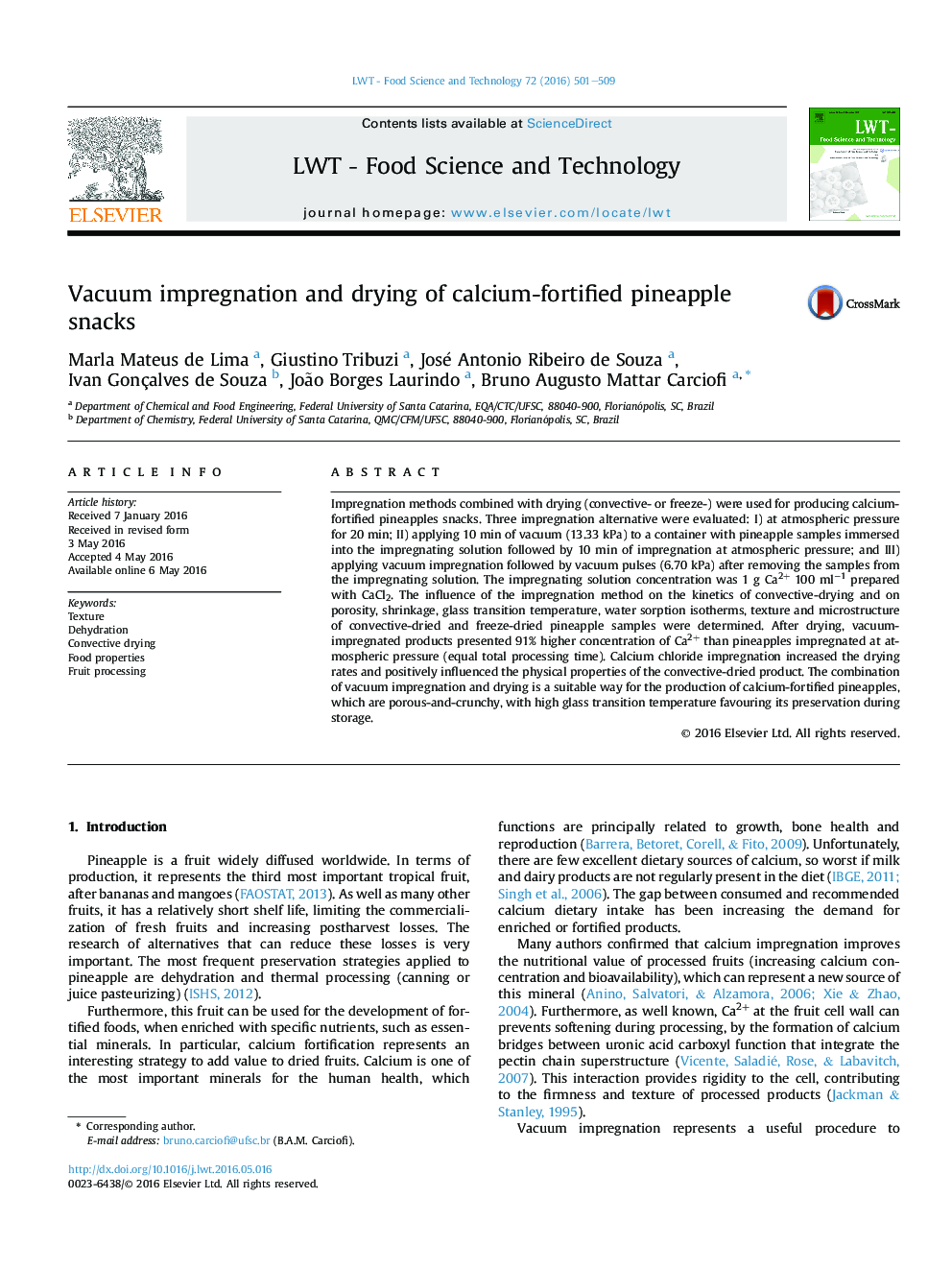| Article ID | Journal | Published Year | Pages | File Type |
|---|---|---|---|---|
| 4563310 | LWT - Food Science and Technology | 2016 | 9 Pages |
•Physical properties of the product are positively influenced by vacuum impregnation.•Calcium-fortified pineapple are porous with high glass transition temperature.•Vacuum impregnation and convective drying produced porous and crunchy snacks.•The proposed process produce an enriched snack according to US and Brazilian legislation.
Impregnation methods combined with drying (convective- or freeze-) were used for producing calcium-fortified pineapples snacks. Three impregnation alternative were evaluated: I) at atmospheric pressure for 20 min; II) applying 10 min of vacuum (13.33 kPa) to a container with pineapple samples immersed into the impregnating solution followed by 10 min of impregnation at atmospheric pressure; and III) applying vacuum impregnation followed by vacuum pulses (6.70 kPa) after removing the samples from the impregnating solution. The impregnating solution concentration was 1 g Ca2+ 100 ml−1 prepared with CaCl2. The influence of the impregnation method on the kinetics of convective-drying and on porosity, shrinkage, glass transition temperature, water sorption isotherms, texture and microstructure of convective-dried and freeze-dried pineapple samples were determined. After drying, vacuum-impregnated products presented 91% higher concentration of Ca2+ than pineapples impregnated at atmospheric pressure (equal total processing time). Calcium chloride impregnation increased the drying rates and positively influenced the physical properties of the convective-dried product. The combination of vacuum impregnation and drying is a suitable way for the production of calcium-fortified pineapples, which are porous-and-crunchy, with high glass transition temperature favouring its preservation during storage.
